
20-12-2025 23:08
Patrice TANCHAUDBonsoir, récolte sur sol sablonneux dans l'arri�

20-12-2025 15:47
Mirek GrycHi.These grew on pine wood that was heavily covere

18-12-2025 21:17
Pol DebaenstThe identification took me to Byssonectria deformi

15-12-2025 07:09
 Danny Newman
Danny Newman
indet. Rutstroemiaceae sp. on unk. fallen leavesMc

19-12-2025 10:10
Patrice TANCHAUDBonjour, récolte réalisée en milieu dunaire, a

18-12-2025 17:23
 Bruno Coué
Bruno Coué
Bonjour,je serais heureux d'avoir votre avis sur c

18-12-2025 18:07
Margot en Geert VullingsThese plumes were found on rotten wood.They strong

17-12-2025 18:35
 Michel Hairaud
Michel Hairaud
Bonjour à tous/Hi to everyone I am passing along
He encontrado este ascomiceto creciendo sobre hojas secas de Acer monspessulanum y Pistacia terebinthus. Es de forma mas o menos globosa, de hasta 0,5 mm, con un pequeño pié. Tiene Ascas biseriadas de (56,04) 63,33 - 88,72 (94,48) x (15,39) 15,77 - 19,71 (20,08) µm. Esporas con forma de semicirculo, de color marrón, más claro en la base, con algunas gútulas en el interior y un largo apéndice en los extremos. La medida de las esporas sin contar los apéndices son estas. (14,48) 15,41 - 17,27 (19,25) x (6,64) 7,17 - 8,35 (9,01) µm
¿Alguien lo conoce o tiene alguna idea de por donde buscar?
Gracias.
Saludos.
Salvador.
Esas esporas me recuerdan al género Lambertella.
Un saludo, Armando.
No Puede ser Lambertella, no es un Discomycete. En un principio pensé que sería un Mixomiceto del género Trichia, no vi que era un ascomiceto hasta que lo miré al microscopio y vi que todas la esferas contenían ascas y esporas.
SaLudos.
Salvador.

¿?
Suerte
Saludos.
Salvador.

"Most probably something new. Not surprising due to the substrates / geography.
Could it be a disco that opens very slowly? [I don't think so, because of the ascus shape]
The only similar spores that came to my mind, but are more lunate, are conidia of Arthrinium cuspidatum (California, other host).
The spores are made of a single cell, i.e. the „horns" are not appendages, unlike Sordariales I know. [my guess was Sordariales]
Galeate, but tiny spores occur in 3 groups, which are all different (yeasts, Eurotiales, Ophiostomataceae)."
Zotto

Maybe the solution is here:
http://www.sciencedirect.com/science/article/pii/S095375629680150X
Galán & Prieto (in "Lambertella palmeri Raitv. & R. Galán descubierta en el continente europeo", Bol. Soc. Micol. Madrid 28, 2004, pp. 161-167, see attach) compare the spores of Lambertella palmeri to those of Bicornispora exophiala and they talk about elipsoid biseriate asci. I don´t have access to the Mycological Research paper, but if somebody has it, then we could see if it is the same species. It is said to be found on Cytisus purgans.
Cheers,
Raúl
Ya se ha puesto en contacto conmigo Walter y se lo voy a mandar para que el lo cultive y estudie, seguro que el nos saca de dudas.
Por lo que yo he visto no es un discomycete que abre tarde, los que se ven abiertos ya no tienen ascas y los que están cerrados tienen dentro ascas inmaduras, maduras y muchas esporas maduras.
Gracias por tu aclaración sobre los cuernos y los demás comentarios.
Saludos.
Salvador.
Pues esperamos a ver si alguien tiene acceso para comparar.
Saludos.
Salvador.
the description of Bicornispora exophiala in Checa et al. (1996) fits quite perfectly! The only difference being in ascospore (60-65 x 8-10 µm) and ascus size ("90-120 x 25-30 µm, stipe 30-35 µm in length"). Maybe you have a new species of Bicornispora, given those differences.
Is it legal to attach the article here?
Best wishes,
Gernot
Sizes are a bit but not so much different.
Salvador: did you include the ascus stipe in your measurements?
If the horns are as long as the body, then spore length approaches the described one.

Yes it would be good if Salva could confirm sporal and asci measurements, but as Gernot says it maybe can be a different species if differences are still there. Also culture should have to be checked in order to compare anamorph. I have contacted with Galán who will contact Checa.
Cheers,
Raúl
Las medidas de las ascas son estas.
(56,04) 63,33 - 88,72 (94,48) x (15,39) 15,77 - 19,71 (20,08) µm
Q = (2,96) 3,32 - 5,00 (5,45) ; N = 26
Me = 74,14 x 17,65 µm ; Qe = 4,23
Esporas.
(28,87) 34,38 - 40,16 (42,54) x (7,34) 7,99 - 11,75 (13,28) µm
Q = (2,76) 3,20 - 4,58 (5,27) ; N = 35
Me = 36,81 x 9,82 µm ; Qe = 3,82
Cuernos.
(4,50) 7,74 - 11,49 (13,68) µm
Me = 9,53 µm
Yo veo bastante diferencia, así que no sería raro que fuese otra especie.
Gernot, yo no se si es legal unir el artículo aquí, pero te agradecería mucho si me lo puedes enviar al privado ajoporros@yahoo.es
Raul, estoy a la espera de lo que te digan Galán y Checa.
Saludos.
Salvador.


regards,
björn
Saludos.
Salvador.
Saludos.
Salvador.

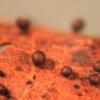
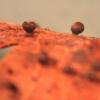
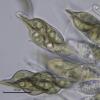
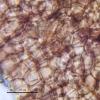
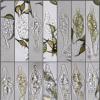
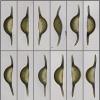
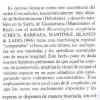
 Bicornispora1996-v100-p500-0001.pdf
Bicornispora1996-v100-p500-0001.pdf